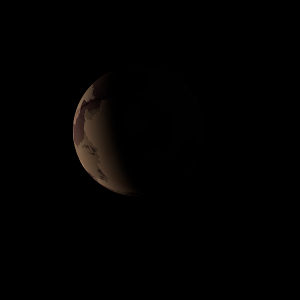|
|
Space Astro
|
Info for exoplanet "Fyouzwai"
| Scientific (actual) data |
|---|
| Name | Kepler-1083 b |
| Planet status | Confirmed |
| Radius | 0.3 |
| Orbital period | 33.4178 |
| Discovered | 2016 |
| Updated | 2021-02-05 |
| Tconj | 2454990 |
| Publication | Announced on a website |
| Detection type | Primary Transit |
| Alternate names | 2MASS J18523886+4511539 b, K02074.01, KIC 8866137 b, KOI-2074 b, KOI-2074.01, WISE J185238.85+451154.0 b |
| Star name | Kepler-1083 |
| Right ascension | 283.16° |
| Declination | 45.2° |
| Mag j | 14.386 |
| Mag h | 13.932 |
| Mag k | 13.815 |
| Star distance | 912 |
| Star metallicity | -0.02 |
| Star mass | 0.81 |
| Star radius | 0.77 |
| Star age | 4.68 |
| Star temperature | 5049 |
| Star alternate names | 2MASS J18523886+4511539, KIC 8866137, KOI-2074, WISE J185238.85+451154.0 |
| Wikipedia article | Kepler-1083 b |
Back
| |
| Fictional info (?) |
|---|
| Suggested name | Fyouzwai |
| Planet type | Cold planet |
| Its north and south poles, therefore, lie where most other planets have their equators. |
| Atmosphere | Ammonium hydrosulfide (NH4SH) | 51% |
| Molecular hydrogen | 45% |
| Ammonia | 3.6% |
| Atmospheric pressure | 40 bar |
 |
| No known satellites |
| Google search for Fyouzwai |
|
Website by Joachim Michaelis
|
|
|
|